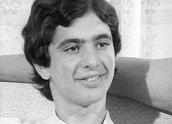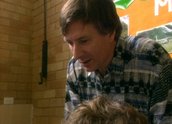

Chequerboard Revisited – Episode 6: That One Piece of Paper (2000)
Synopsis
The original Chequerboard program was made in black-and-white in 1972. Two boys were chosen from Liverpool Boys’ High School. Pat wants to leave school immediately at age 16 to try for work as a technician while Ken, who loves school, wants to continue to university to become a teacher. In 2000 we meet them again, now grown men in their forties who reflect maturely on their life choices.
Curator’s notes
The underlying message of the original Chequerboard program is clear. As the title suggests, 'that one piece of paper’ is vital to one’s future. It’s only when we see these boys as men in their forties with good jobs and loving families that we realise that there are many different directions that life can go for a young person, even after an initial setback. The Chequerboard Revisited episode is produced and directed by Aviva Ziegler, who was the researcher for the original program, which was directed by Neil Munroe. It is a fascinating longitudinal study of the many obstacles and opportunities that make up a life.
Both boys are frank about their talents and their failings when we meet them at age 16. Pat is from an Italian immigrant family with loving and supportive parents who want him to continue at school. Ken’s family is still suffering the sudden death of his mother by drowning when he was younger. He finds solace in the school’s highly structured environment and is keen to continue to the HSC (the public examination used for entry to university).
The original program ends with both boys receiving their School Certificate results (the public exam at the end of year 10). Ken has done very well in all subjects while Pat has done badly, with failed marks in three key subjects including English and Maths, the very subjects he needs to have passed in order to find an apprenticeship. The original program leaves us with a real sense of unease about Pat’s future and a feeling that Ken is on his way to university and a career in teaching.
In the follow up Chequerboard Revisited we discover that, in many ways, exactly the reverse happened. Pat’s family persuaded him to repeat the School Certificate at a technical school. His televised story caught the eye of a tradesman who made contact with the boy and offered him an apprenticeship. Pat completed his apprenticeship in the same firm where, almost thirty years later, he’s now a senior manager, having worked his way up from the shop floor.
Ken’s story is another surprise. He spectacularly failed his first year at university and spent several years as a lost soul trying to come to terms with his mother’s death before retraining as a primary school teacher and finding solace through religion and a loving family.
The program is cleverly structured so that there is a dramatic reveal of each individual’s life story. At first, each man is reflecting on the earlier program while he is watching it on video at home with his family. Only gradually are we introduced to the developments of the intervening decades.
It’s interesting to contemplate the very different take home message from each program. The original Chequerboard emphasises the idea that there’s not much hope of a good career without that 'one piece of paper’, while the follow up is much more optimistic. It suggests that life’s opportunities come to you from many different directions and that you can become a fully rounded individual, and maybe even a more interesting one, for having gone through some difficult moments along the way.
- Overview
- Curator’s notes
- Video 2 clips
- Principal credits
- Find a copy
- Make a comment
- Map
- Add your review



